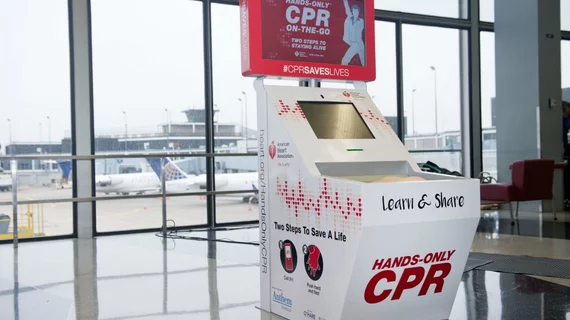More than 100,000 individuals across the nation learned about hands-only CPR through training kiosks since the American Heart Association (AHA), along with Anthem Foundation, launched its program in 2016.
Currently, 30 hands-only CPR training kiosks are in use in high-traffic, public locations, including airports. Data from the kiosks recorded 230,547 visits and 110,649 complete training sessions through June 30.
“Less than half of out-of-hospital cardiac arrest victims receive CPR from a bystander, which is a grim statistic that needs to change,” Danielle Cortes DeVito, a Chicago paramedic and AHA Hands-Only CPR volunteer, said in a prepared statement issued by the AHA. “Bystander CPR is crucial when a person is in cardiac arrest. But many Americans don’t perform CPR for a variety of reasons such as lack of training or low confidence. Through the self-instruction available at these kiosks, the public can learn hands-only CPR and start to build confidence to perform this life-saving skill that may make the difference for someone they know or love.”
As part of the AHA’s 2020 goals to double survival from cardiac arrest and train 20 million people in CPR, they developed the pilot kiosk and placed it at the Dallas-Fort Worth International (DFW) airport. During a 32-month period, the association noted, more than 23,000 visitors tried the device.
The AHA noted that CPR potentially can triple the chances of survival for someone with cardiac arrest, especially if it’s performed immediately.
“This novel approach has trained 100,000 additional people in CPR, which is a major step toward our vision of a nation of life-savers,” said John Meiners, the AHA’s Chief of Mission Aligned Businesses and Healthcare Solutions. “Nearly 90 percent of people who experience a cardiac arrest outside the hospital die, so we continually look for innovative ways to train the public in hands-only CPR in order to improve survival outcomes.”

